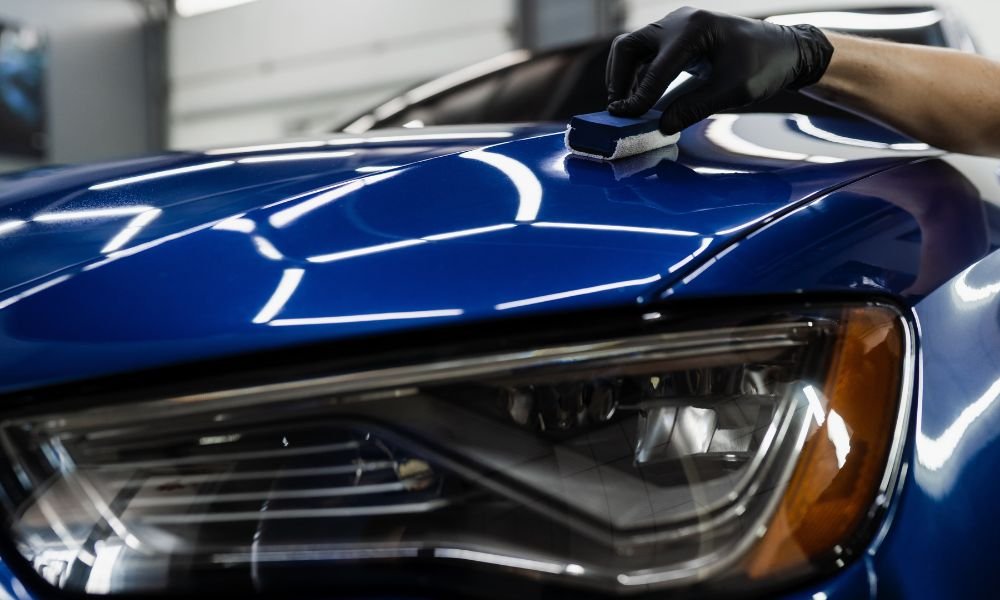A Comprehensive Overview to the Kinds Of Ceramic Layer on the Market
Ceramic layers have emerged as a critical remedy across numerous markets because of their distinct buildings and applications. From silica-based solutions known for their robustness to hybrid alternatives that combine multiple advantages, the selections readily available can be frustrating. Understanding the subtleties of each type, including their certain advantages and ideal usage situations, is necessary for making notified choices. As we discover the unique characteristics and applications of these finishes, the effects for efficiency and durability end up being significantly obvious, raising concerns regarding which type may ideal suit your needs.
Understanding Ceramic Coatings
Ceramic coverings are sophisticated protective remedies that have actually gotten appeal in various industries, especially in automobile and aerospace applications. These coverings contain a liquid polymer that, when cured, forms a sturdy, hydrophobic layer on the surface area of the substratum. This layer gives boosted resistance to ecological contaminants, UV radiation, and chemical exposure, therefore expanding the life and visual allure of the underlying product.
The basic part of ceramic coatings is silica, which adds to their hardness and resilience. The application process commonly involves surface preparation, application of the coating, and curing, which can be attained via warmth or UV light. When treated, ceramic layers display extraordinary bonding residential properties, allowing them to stick highly to a selection of surface areas, consisting of steels, plastics, and glass.
In addition to their protective features, ceramic coatings also offer ease of upkeep. Their hydrophobic nature reduces the adherence of dust and gunk, making cleansing easier and much less constant. Overall, the fostering of ceramic coatings stands for a considerable improvement in surface area protection modern technology, supplying both practical and visual advantages throughout numerous fields.
Types of Ceramic Coatings
Various kinds of ceramic finishes are available, each developed to satisfy certain performance demands and applications - Paint Protection Film. One of the most common types consist of:
Silica-based Coatings: These layers mostly contain silicon dioxide and are understood for their toughness and chemical resistance. They are extensively used in vehicle and industrial applications.
Titanium Dioxide Coatings: Renowned for their photocatalytic homes, titanium dioxide coatings are usually used in atmospheres where self-cleaning and antifungal properties are preferable, such as in building materials and automobile coatings.
Zirconia Coatings: Identified by their high-temperature security and thermal resistance, zirconia finishes are utilized in applications such as wind turbine engines and high-performance automobile elements.
Alumina Coatings: Displaying superb firmness and thermal stability, alumina finishings are frequently used in wear-resistant applications, including cutting tools and commercial machinery. - Car Detailing
Crossbreed Coatings: Integrating the residential or commercial properties of various products, crossbreed layers provide improved efficiency attributes, making them suitable for unique and requiring applications.
Each kind of ceramic layer offers distinct objectives, allowing users to select one of the most ideal option based on details ecological problems and efficiency needs.
Advantages of Ceramic Coatings
Ceramic coverings, in specific, deal various benefits that make them significantly popular amongst makers and consumers alike. These coatings are resistant to scrapes, chemicals, and UV rays, making sure that the underlying surface area stays secured over time.
Along with sturdiness, ceramic coatings give excellent hydrophobic buildings, enabling for easy cleansing and upkeep. This water-repellent nature reduces the adherence of dirt, grime, and various other impurities, which can prolong the aesthetic allure and functionality of the surface area. Furthermore, ceramic coatings can dramatically enhance thermal resistance, making them ideal for applications that endure high temperatures.

Application Process
When using ceramic layers, a thorough approach is essential to achieve ideal results. A clean surface area ensures appropriate bond of the coating.
Once the surface area is prepped, the next step is about his to use the ceramic layer. The finishing ought to be applied in thin layers, as thicker applications can lead to uneven surfaces.
After application, the coating calls for a specific treating time, generally varying from a couple of hours to a full day, relying on the product. Throughout this time, it is essential to stay clear of exposure to dampness or contaminants. A mild buffing may be necessary after healing to boost the gloss and eliminate any kind of high areas. Following these steps faithfully will optimize the efficiency and durability of the ceramic coating, supplying a long lasting safety layer for the surface area.
Maintenance and Longevity
To make sure the long life and performance of a ceramic layer, regular upkeep is crucial. Ceramic finishings, understood my link for their sturdiness and safety qualities, call for details treatment routines to optimize their life-span and performance.
In addition to routine washing, regular examinations are vital. Search for indicators of wear or damages, such as hydrophobic residential properties decreasing or surface imperfections. If essential, a light polish may be put on rejuvenate the covering without stripping it away.
Furthermore, the application of a booster spray can enhance the finishing's hydrophobic effects and recover its gloss. This is particularly advantageous for finishes that have been in usage for a prolonged duration. Eventually, by sticking to these upkeep practices, one can significantly expand the life of a ceramic covering, making certain that it remains to supply optimal defense versus environmental factors and preserve the visual allure of the lorry.
Conclusion
